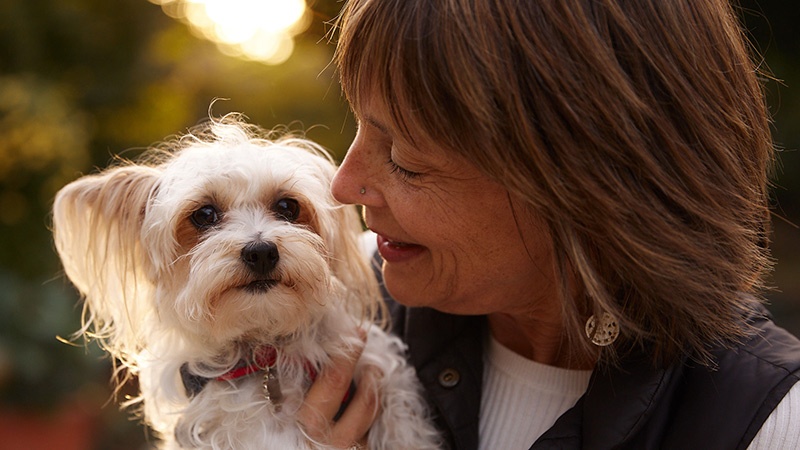
It is sooo painful to watch your four-legged furry friend work herself into a frenzied state when she’s feeling anxious. This anxiety is her anticipation of future dangers from unknown or imagined sources that result in normal body reactions associated with fear.
The most common behaviors that can signify dog anxiety are…
- shaking
- lip licking
- tail tucking
- elimination (urination or passing bowel movements)
- destruction of the surrounding environment
- excessive barking and/or crying
Separation anxiety is the most common specific anxiety in companion dogs. When alone, your buddy may exhibit anxiety or excessive distress behaviors.
Before learning methods to care for your anxious furry friend, it’s important to learn the causes. This way, you’re able to address the root cause instead of just symptoms. Just as in humans, dog anxiety can be a symptom of something greater. In my list below, I take illnesses, medical conditions and history into consideration.
Causes of Fear and Dog Anxiety
- Any illness or painful physical condition increases dog anxiety, contributing to the development of fears and phobias. It is always a great idea to have your precious pup checked for physical problems that could be the root cause of his anxiety.
- Aging changes can be associated with nervous system changes. Quite often, older canines with approaching dementia, also known as Canine Cognitive Dysfunction, can exhibit nervous behavior. This is especially related to being left alone. It is not uncommon for older dogs to display behaviors similar to the Sundowner Syndrome seen in older humans. In dogs with Canine Cognitive Dysfunction, Sundowner Syndrome can lead to confusion, restlessness, agitation, repetitive pacing, barking for no apparent reason, irritability, or neediness. This can cause independent dogs to shift into being “velcro dogs” as night approaches.
- Infectious disease: primarily viral infections in the central nervous system and toxic conditions, such as lead poisoning, may lead to behavioral problems.
- Fear from a terrible experience: has your dog been forced into an unfamiliar and frightening experience? Adopted and rescued dogs can fit into this pattern, depending on their life experiences.
- Dogs that are deprived of social and environmental exposure until fourteen weeks of age may become habitually fearful.
- Anxiety can present as a phobia, which is described as a persistent and excessive fear of a specific situation. Often, once a phobic event has been experienced, any association or memory can trigger a response. The most common phobias are associated with noises, such as thunderstorms, gunshots or fireworks.
- Phobias and panic may be caused by a history of inability to escape or get away, such as being locked in a crate.
- Separation anxiety: Does your dog have a history of abandonment, multiple owners, re-homing, or neglect? If your dog has often been abandoned or re-homed because of separation anxiety, that will intensify his condition.
Never fear! All is not lost! Most abnormal reactions are learned responses and can be unlearned with a combination of conscious training, additional healing modalities and supplements.
As I see it, every four-legged sweetest-being-ever gets to experience life from a well grounded, well rounded and chill point of view. When your dog is relaxed, you can see it on his face. I’ll give you details to watch for in next week’s post. To learn more about encouraging your pup to relax, look out for our post next week: “Tips to Chill your Canine.”

